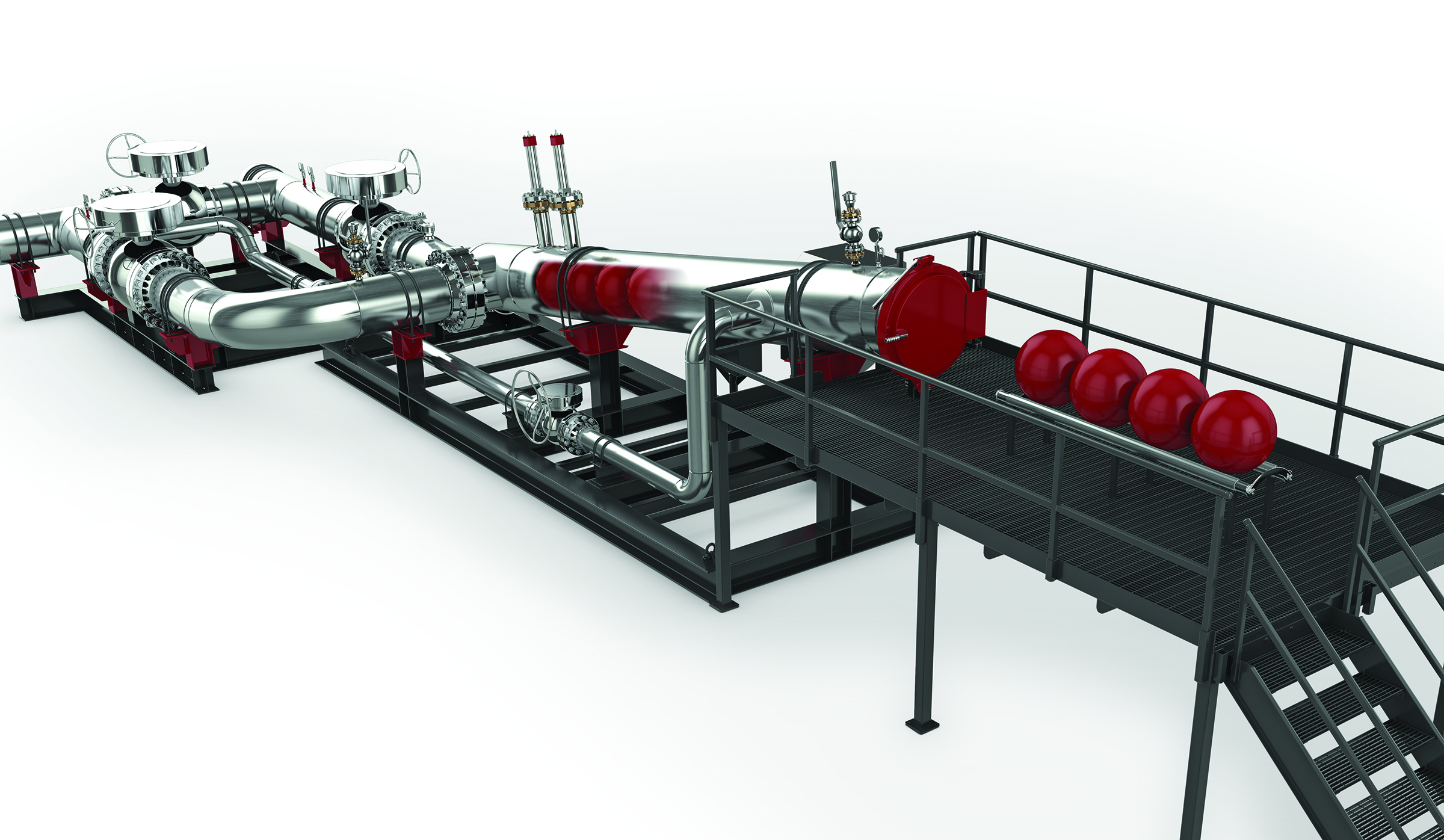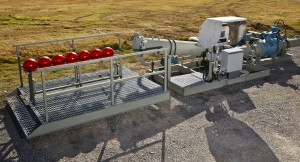Pigging Takes Aim at Paraffin Content in Shale Play Pipes

At a meeting of the American Fuel and Petrochemical Association, Michael Wojchiechowski, an economist at global energy consultant Wood Mackenzie, referred to the production from U.S. shale deposits as a “tight-oil tidal wave” – in other words, a large, unstoppable, liquid force.
But as operators from the Bakken to the Eagle Ford and Niobrara to Marcellus know, there are plenty of challenges to keeping that enormous flow going, one being the high paraffin content of shale oil.
Shale oil is full of highly variable paraffin. In fact, as many as 70 different types turned up in a single oil sample taken from the Eagle Ford, according to a recent Hydrocarbon Processing report. In addition to creating processing and refining problems, shale oil paraffin can lead to financial disasters closer to the wellhead.
For example, stubborn waxy deposits accumulating on gathering line walls can reduce the pipe’s effective internal diameter, causing flow rate to slow or production to cease altogether. What’s more, when wax adheres to the sides and top of pipe interiors, water can collect in low spots, encouraging bacteria growth that can lead to corrosion and pinholes. Compressors also have to work harder to pump through paraffin-filled lines, and that adds to operating costs.
It’s no surprise, then, that paraffin control is a key concern in shale plays. This goes beyond simply keeping the pipe bore open; the ultimate goal is to completely clear the pipeline, then prevent future wax buildup.
Not only is a clean line fundamental to maintaining performance, getting the wax out improves pipeline integrity by facilitating first-run success of an inline inspection tool – which is becoming more important as the Pipeline and Hazardous Material Safety Administration (PHMSA) considers regulating gathering line integrity inspections. PHMSA spokesman Damon Hill said that although PHMSA hasn’t seen any particular evidence that shale oil has affected pipeline integrity, the agency continues to study potential gathering line hazards.
Increasing Throughput: Easier, Less Expensive, Safer
It can take a combination of mechanical, chemical, and other cleaning techniques to eliminate all of the wax and debris from pipelines that carry shale oil, waxy crude, or natural gas liquids (NGL), said Troy Geren, one of T.D. Williamson’s (TDW) global pigging technology product managers. A good place to start is to soften the wax with chemicals, then deploy a progression of cleaning pigs, gradually working up from light tools – like foam pigs – to more aggressive tools, including urethane blades, cups, discs, and metallic brushes.
Geren also suggested having plenty of patience on hand.
“Operators have had to manually run as many as 60 pigs to get a single dirty line completely cleared,” he said.
Once the pipeline is clean, routine maintenance pigging – generally performed weekly for most waxy crude lines – is in order to prevent contaminants like paraffin from accumulating, and to maximize throughput.
To help operators reach those goals, global pipeline service provider TDW has developed an automated pig-only launcher that can be remotely programmed to launch several cleaning pigs, sequentially, at designated times and intervals. The SmartTrap® Automated Pig System – or “AutoPig launcher,” for short – is an extension of the SmartTrap product line, which already includes the AutoCombo system. The launcher is currently in the design validation phase with commercialization anticipated later this year.
The launcher was created at the request of operators who appreciated the capabilities of the AutoCombo – which launches both spheres and pigs – and asked TDW to meet their needs for a pig-only launcher.
Geren said the launcher will help operators respond to cost pressures by significantly reducing the number of trips crews make to the field. He also estimated a substantial safety increase, compared to traditional manual launchers.
“The riskiest part of a pigging operation is opening and closing the door,” Geren said. “With the AutoPig launcher the closure door is opened and closed fewer times than if you were manually launching one pig a day. The line is also pressurized and depressurized less often.”
With a torrent of shale oil continuing to lift the North American oil and gas industry, operators are constantly seeking new ways to increase throughput. Innovations that increase safety and performance, while reducing costs, will keep them doing just that – riding atop the “tight-oil tidal wave.”
Pigging Help Desk
Although operators agree on the “why” of pigging – to keep the pipe bore open and product flowing – many find that the “hows” and “whens” can be a little bit trickier to determine.
Another challenge? Knowing exactly which pig to run. Whether pigging is being planned to clear a dirty line or as part of a routine maintenance strategy, decisions like these are all part of the calculus.
Despite some widely accepted industry guidelines, establishing an appropriate pigging practice isn’t a completely cut-and-dried proposition, said Stephen Miska, P.E., one of TDW’s global product managers for pigging technology.
“Pigging choices depend on several variables, such as product composition, temperature, flow rate, and pigging history, as well as pipeline conditions, wall thickness, bore reduction, bend sizing, valves etc.,” Miska said.
The type of deposit that forms in the pipeline – iron sulfate, mineral scales, bacteria, paraffin, black powder, asphaltene, degraded compressor oil, amines, and glycol, to name a few – also affects pigging decisions.
In other words, making the wrong pig choice might result in an ineffective cleaning with no real benefit, not to mention a waste of money.
Or the consequences could be far worse, such as launching an overly aggressive pig into a line that hasn’t been pigged frequently enough and it gets stuck, ultimately causing an entire system shutdown.
To help operators fully leverage their pigging programs, Miska said, T.D. Williamson offers consultation about pig selection and pigging frequency, and can custom-engineer pigs to match specific operational requirements. It also installs pigging equipment and provides startup, maintenance, and operation.
“We can’t yet keep wax and other deposits from forming,” Miska said. “But we can help operators maximize their safety and throughput by keeping their pipe bore clean and free of debris through ongoing education and routine pigging.”

SmartTrap automated combo system
Related News
Related News

- Keystone Oil Pipeline Resumes Operations After Temporary Shutdown
- Freeport LNG Plant Runs Near Zero Consumption for Fifth Day
- Biden Administration Buys Oil for Emergency Reserve Above Target Price
- Mexico Seizes Air Liquide's Hydrogen Plant at Pemex Refinery
- Enbridge to Invest $500 Million in Pipeline Assets, Including Expansion of 850-Mile Gray Oak Pipeline




Comments